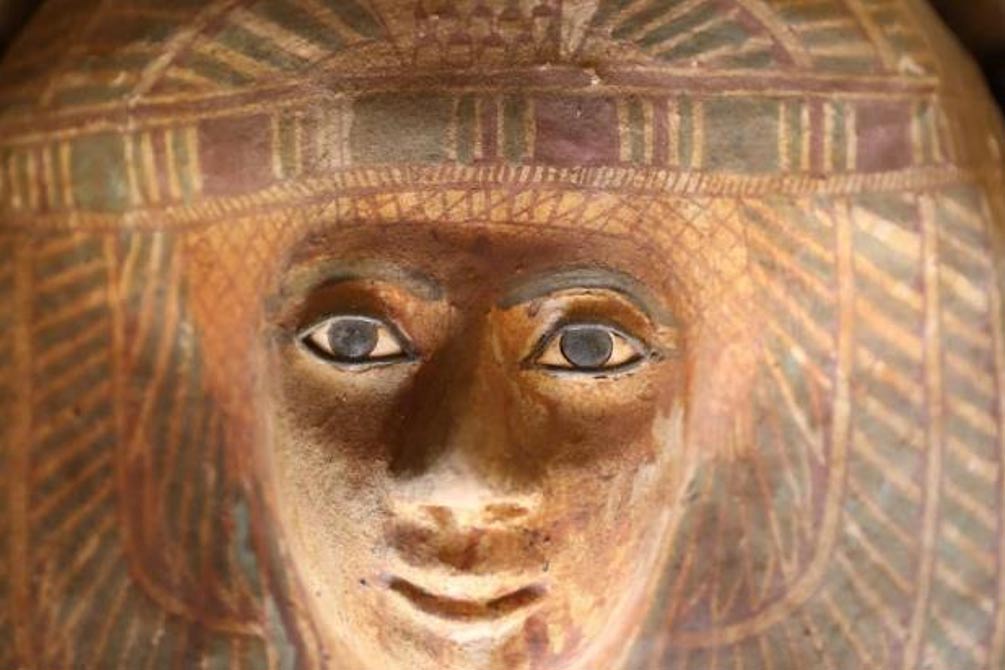4,500-Year-Old Double Tomb for Pharaoh Purifiers Revealed On Giza Plateau
The Giza Plateau is the famous home of the Great Pyramids and the Sphinx. But it is also the location of a workers’ village, industrial complex, and several cemeteries. Countless discoveries have been made there over the years and recent excavations show the Giza Plateau still holds more fascinating finds just waiting to be unearthed. Just today, Egyptian officials announced the discovery of an Old Kingdom cemetery with an impressive double tomb and numerous interesting artifacts.
General Secretary of the Supreme Council of Antiquities Mostafa Waziri said the Old Kingdom cemetery was found in the south-eastern part of the pyramids area during excavations in that area in August 2018. 450 cubic meters of sand had to be moved to reveal for archaeologists to reach the double tomb, which Luxor Times reports is just one of several of the Old Kingdom tombs that were found. Burial shafts, which served as communal graves, were also identified at the site.
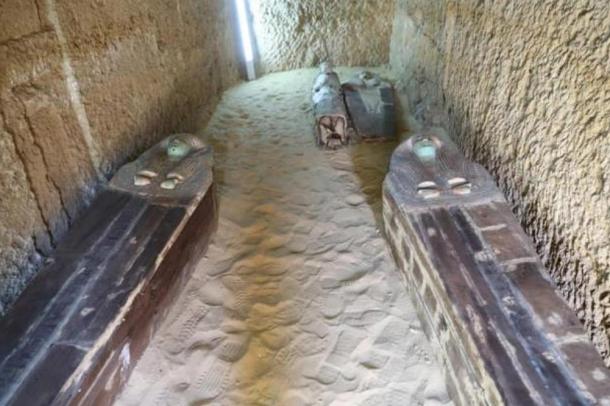
Burials in the Giza Plateau cemetery. (Ministry of Antiquities)
The Most Interesting of the Old Kingdom Tombs
The oldest of the Old Kingdom tombs is also taking the lead as the most interesting of the graves found during the August 2018 works at the site. It is a limestone tomb that has been dated to the fifth dynasty (circa 2500 BC) and was built for two people.
- Rich Pickings in Luxor As Two Family Tombs are Found Including that of a Royal Goldsmith
- Religion and Magic in Amarna: Battling Forces from Different Realms—Part I
- Hidden Underworld of the Giza Plateau is Finally Brought to Light
Behnui-Ka is the first of the tomb owners. His name has not been mentioned in other places on the Giza Plateau and Luxor Times reports he held seven titles, including: “the Priest, the Judge, the purifier of kings: Khafre, Userkaf and Niuserre; the priest of goddess Maat, and the elder juridical in the court.” Behnui-Ka shared the tomb with Nwi, who is said to have had five titles of his own, such as “chief of the great state, the overseer of the new settlements, and the purifier of King Khafre.”
According to Business Standard, an AFP photographer who entered the cemetery saw “inscriptions on the walls, intricately painted wooden sarcophagi and sculptures of animals and humans.” Egypt Today reports that the inscriptions are “in a good condition.” Several artifacts have also been found in the tomb, with a limestone statue depicting one of the tomb’s owners, his wife, and his son, being highlighted as one of the most interesting finds.
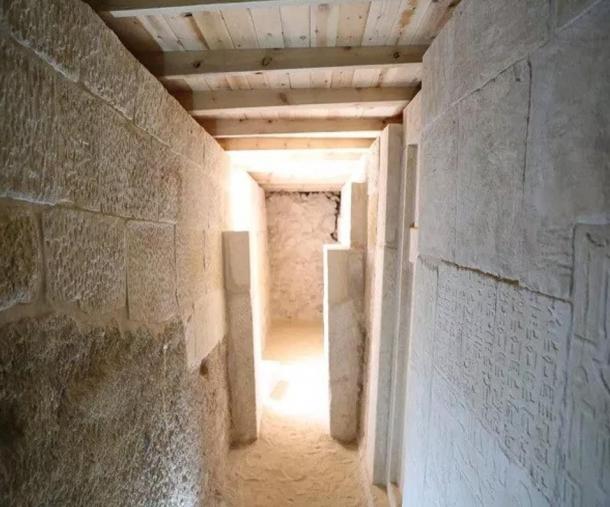
Inscriptions found on the walls of one of the Giza Plateau tombs. (Ministry of Antiquities)
Colorful Funerary Masks
Ashraf Mohi, Director General of Giza Plateau, told reporters that the Old Kingdom cemetery was re-used in the Late Period (beginning in the 7th century BC). Evidence for this comes in the form of the many beautifully decorated wooden anthropoid coffins, some with hieroglyphic inscriptions. Many fine wooden and clay funerary masks were also discovered at the site and some of them still retain their coloring.
- 30 Mummies Including Mother Holding an Infant Discovered in 2,000-Year-Old Egyptian Tomb
- New details emerge on latest discovery of Egyptian tomb and treasure trove
- The Great Pyramid of Giza: A Modern View on Ancient Knowledge, Earth and Water – Part I
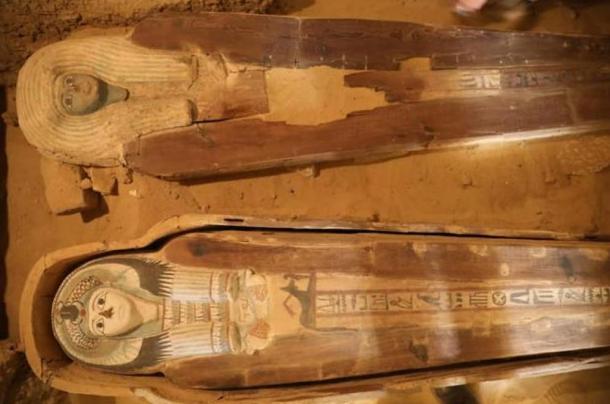
Two highly-decorated coffins found in the Giza Plateau cemetery. (Ministry of Antiquities)
Other Tombs on the Giza Plateau and Promoting Tourism
Dr. Zahi Hawass, a famous former Minister of Antiquities, was also present at the press meeting and discussed how the location was significant to him because the Giza Plateau is where tombs of pyramid workers have been discovered and the evidence from that find “confirms that the Egyptians were not slaves and built their tombs to the other world like their kings.”
While speaking with Ahram Online, Hawass also stressed the importance of making new discoveries known worldwide as it is “the best way to promote Egypt abroad.” This is an area of concern and one which the Ministry of Antiquities has placed emphasis on, with several announcements having been made of discoveries in the recent past. There are strong hopes that these findings could revive the tourism industry, a major source of income for the country.
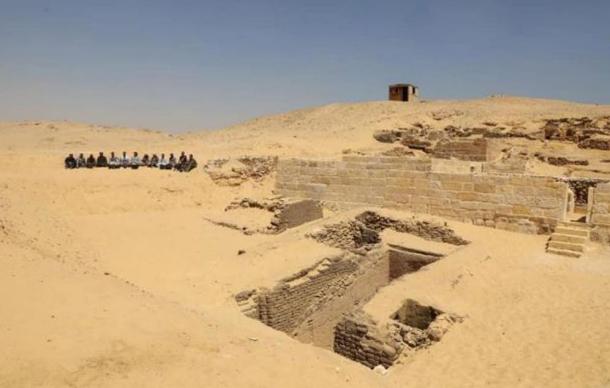
View of the excavation site. (Ministry of Antiquities)
Top Image: Detail of one of the decorated sarcophagi found in the recently excavated cemetery on the Giza Plateau. Source: Ministry of Antiquities
















